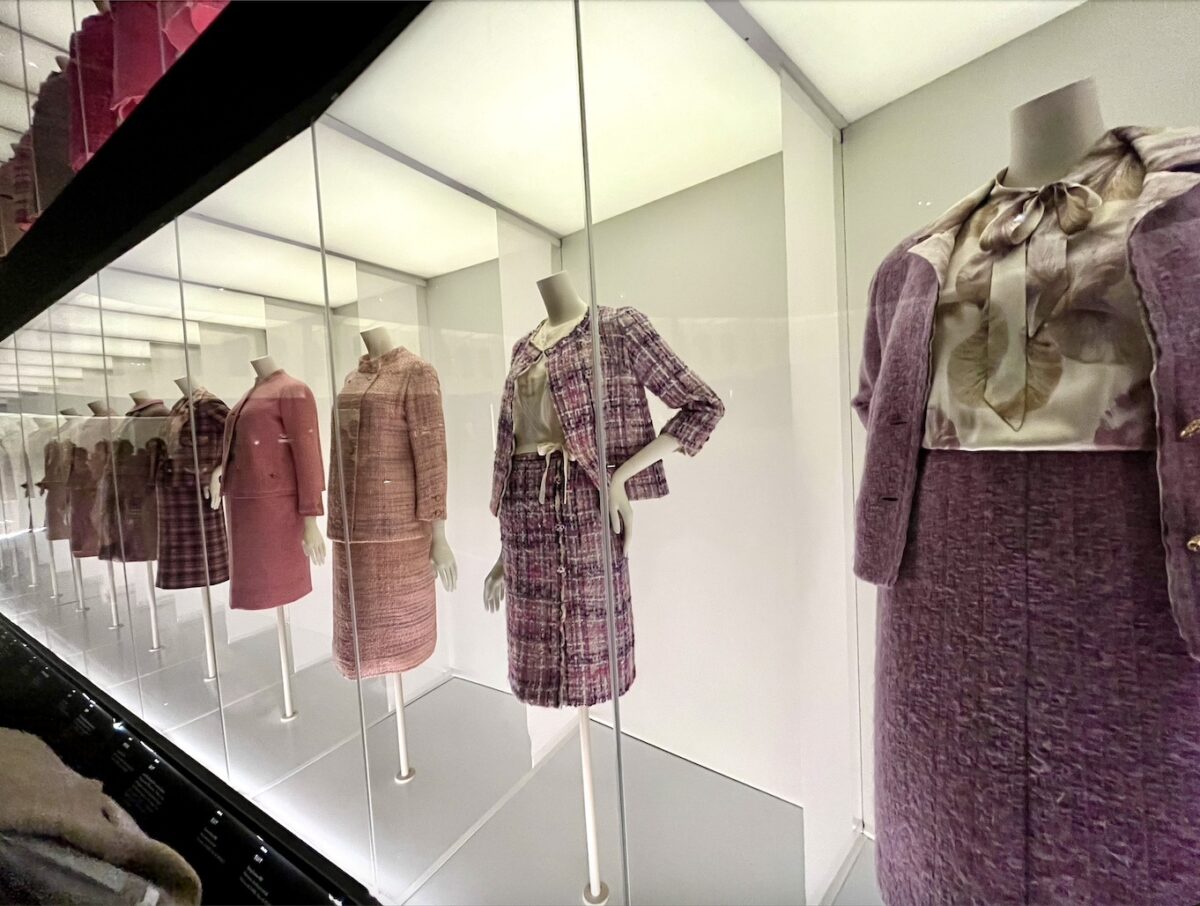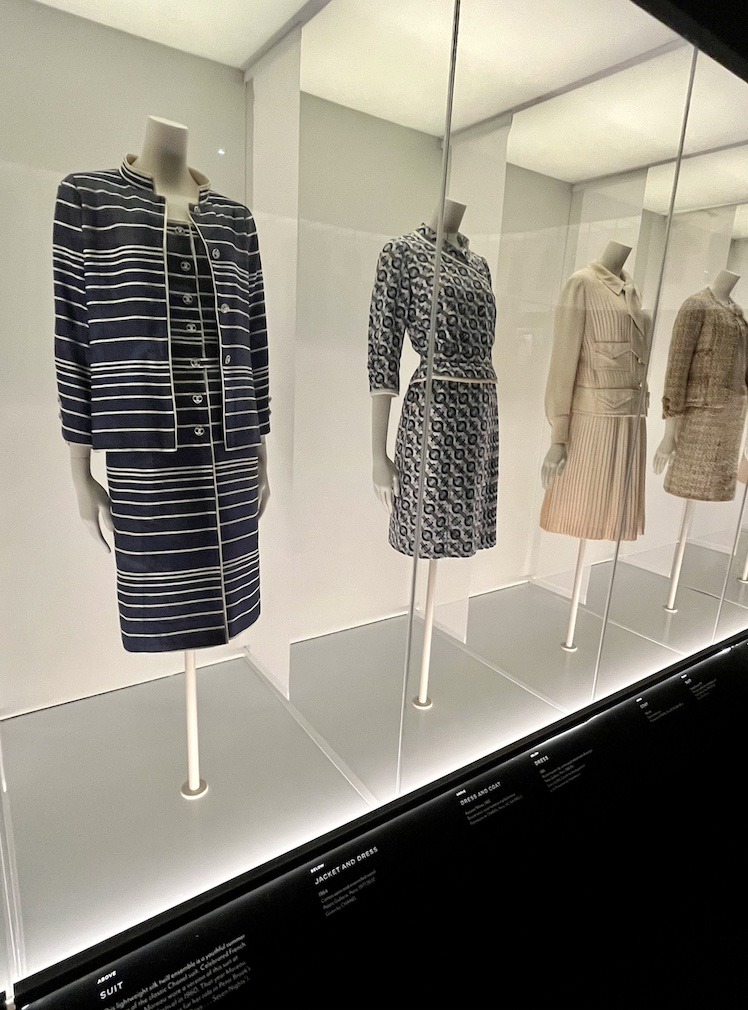
 In a city as large and culturally rich as London, there’s always something vying for your attention, but the hottest ticket in the British capital is not a show in the West End or a concert at the O2 arena. The must-see attraction of the last few months is, in fact, a museum exhibit. Gabrielle Chanel: Fashion Manifesto at the Victoria & Albert Museum is an impressive collection of the iconic fashion designers’ enduring influence on style and fashion.
In a city as large and culturally rich as London, there’s always something vying for your attention, but the hottest ticket in the British capital is not a show in the West End or a concert at the O2 arena. The must-see attraction of the last few months is, in fact, a museum exhibit. Gabrielle Chanel: Fashion Manifesto at the Victoria & Albert Museum is an impressive collection of the iconic fashion designers’ enduring influence on style and fashion.
Born in 1883 in Western France to a poor family, at age 8, Gabrielle ‘Coco’ Chanel loses her mother and is sent to a convent orphanage, where she remains before studying as a charity pupil at a convent school in Central France. By age 20, Gabrielle first starts her career in the textiles trade- working as an assistant to her aunt selling cloth in a drapers shop. Yet, her first foray into wearable fashion was via headwear when she opened a hat shop in Paris. By 1910, she launched her first proper millinery boutique in Paris and gained the attention of the press for her designs; a mere two years later, she opened a second millinery boutique in the seaside resort of Deauville, adding some knitwear items. Appropriately, the first of Chanel’s designs we encounter in the gallery, titled “A New Elegance,” is an understated black silk hat. It is the sole item we see from Chanel’s hat-making beginnings on display.
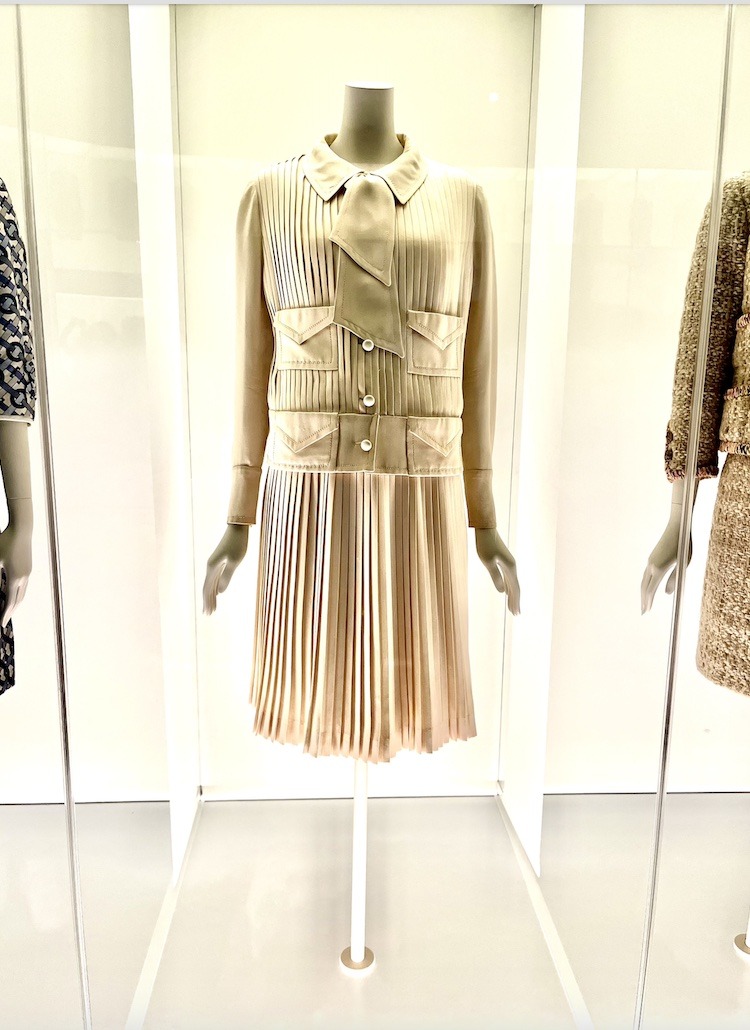 By 1915, Chanel marks her entrance into the world of high fashion by opening her first boutique, Haute Couturier, in Biarrtiz, another seaside community known for its wealthy population. Having found success with her fashions, by 1918, she brought her design to Paris, opening the haute couture house at 31 rue Cambon, a few doors down from her Parisian millinery, and a site where the infamous fashion house remains today. It is here where the exhibition, much like Chanel’s life, takes flight. Chanel’s early designs surround us as we weave through angled corridors. From the onset, it is clear that Chanel has developed a color palette that will remain her signature for most of her work: cream, black, white, navy, and red. These early pieces lack overt ornamentation. They are simple silhouettes, with exceptions for the occasional flowers, with every piece evoking a sense of delicateness and dainty. What is interesting about these early pieces is that while they feel timeless in the way all of Chanel’s designs tend to, you can still feel a bit of restraint. The clothes are pretty and elegant, but they lack the confidence that her later work so obviously embraces. In that sense, these are among the most special pieces in the exhibition as you can witness the impressiveness of these freshman offerings and how much Chanel’s work would grow in subsequent years.
By 1915, Chanel marks her entrance into the world of high fashion by opening her first boutique, Haute Couturier, in Biarrtiz, another seaside community known for its wealthy population. Having found success with her fashions, by 1918, she brought her design to Paris, opening the haute couture house at 31 rue Cambon, a few doors down from her Parisian millinery, and a site where the infamous fashion house remains today. It is here where the exhibition, much like Chanel’s life, takes flight. Chanel’s early designs surround us as we weave through angled corridors. From the onset, it is clear that Chanel has developed a color palette that will remain her signature for most of her work: cream, black, white, navy, and red. These early pieces lack overt ornamentation. They are simple silhouettes, with exceptions for the occasional flowers, with every piece evoking a sense of delicateness and dainty. What is interesting about these early pieces is that while they feel timeless in the way all of Chanel’s designs tend to, you can still feel a bit of restraint. The clothes are pretty and elegant, but they lack the confidence that her later work so obviously embraces. In that sense, these are among the most special pieces in the exhibition as you can witness the impressiveness of these freshman offerings and how much Chanel’s work would grow in subsequent years.
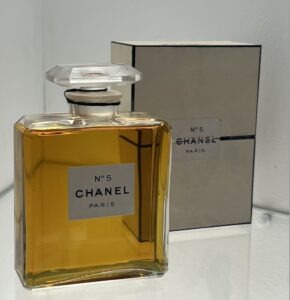 A whole exhibit room titled “The Invisible Accessory” is dedicated, rightfully so, to Chanel’s foray into scents. Having launched the iconic Chanel No 5 in 1921, a global sensation that still dominates, this vast collection of bottle designs and subsequent perfumed products (soaps, talcs, men’s scents) showcases Gabrielle Chanel’s business savvy. Even today, with a broader array of people able to afford Chanel creations in one form or another, the storied perfume is perhaps the most accessible of the designer’s contributions to the culture, and it is befitting that the perfumery was given some deference if only for its popular longevity. It is a favorite of both working women and monarchs, as evidenced by the handwritten note from the late Queen Elizabeth II thanking a friend for a gift of the now classic perfume.
A whole exhibit room titled “The Invisible Accessory” is dedicated, rightfully so, to Chanel’s foray into scents. Having launched the iconic Chanel No 5 in 1921, a global sensation that still dominates, this vast collection of bottle designs and subsequent perfumed products (soaps, talcs, men’s scents) showcases Gabrielle Chanel’s business savvy. Even today, with a broader array of people able to afford Chanel creations in one form or another, the storied perfume is perhaps the most accessible of the designer’s contributions to the culture, and it is befitting that the perfumery was given some deference if only for its popular longevity. It is a favorite of both working women and monarchs, as evidenced by the handwritten note from the late Queen Elizabeth II thanking a friend for a gift of the now classic perfume.
One cannot mention Chanel without talking about the little black dress, the creation that, when launched in 1926 in American Vogue, would cause such an uproar globally that to this day, the ‘simple black dress’ has long since evolved, been emulated, recreated and reimagined in one way or another but is still shaped by Chanel’s original design or more importantly the style rule that owning one must be a cornerstone of any woman’s wardrobe. While the dress and its offshoots receive its due place in the exhibit gallery titled “The Emergence of a Style” the curators do not overly dwell on it.
 |
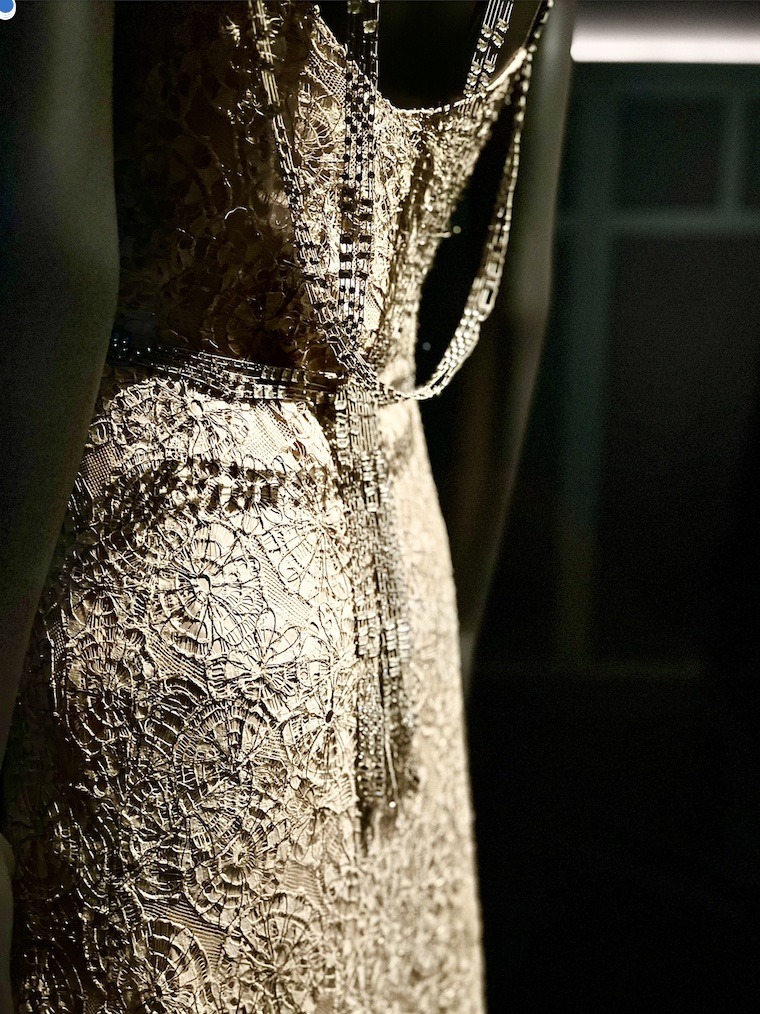 |
 |
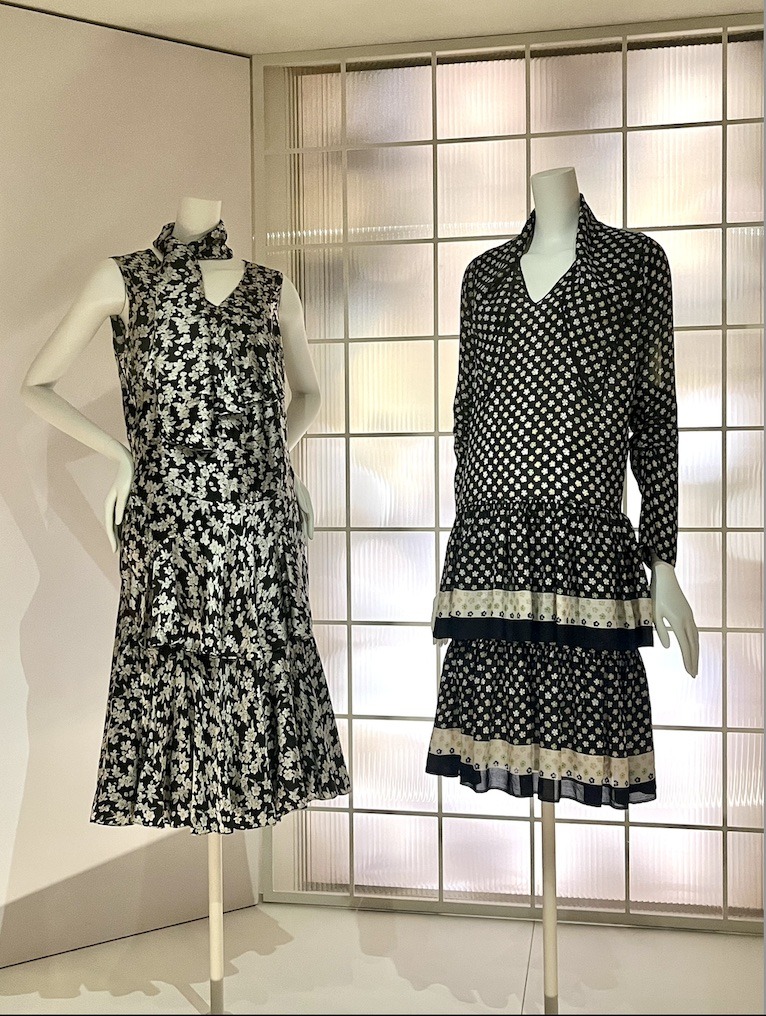 |
 As I walked through the countless galleries showcasing the designer’s work, it is evident why the name Chanel was still meant to epitomize what fashion, at its best, can be. These garments evoke elegance, glamour, and timelessness. The evening wear, in particular, says look at me in a way that is neither ostentatious nor de rigeur. In fact, upon looking at it, I wish we’d see more styles like the one Chanel so beautifully imbued in her garments on today’s red carpets other than pieces that seem to scream, “I am different”.
As I walked through the countless galleries showcasing the designer’s work, it is evident why the name Chanel was still meant to epitomize what fashion, at its best, can be. These garments evoke elegance, glamour, and timelessness. The evening wear, in particular, says look at me in a way that is neither ostentatious nor de rigeur. In fact, upon looking at it, I wish we’d see more styles like the one Chanel so beautifully imbued in her garments on today’s red carpets other than pieces that seem to scream, “I am different”.
This remarkable exhibit does a beautiful job of showcasing Chanel’s brilliance as a designer- an artist who worked with textiles, silhouettes, and colors and whose work deserves the recognition of a retrospective exhibit in a museum as storied as the V&A. Yet, one couldn’t help but feel that whether because of the layout of the galleries (particularly at the start of the exhibit) or the sheer amount of guests allowed in at once, there was a sense of claustrophobia in witnessing the work that detracted from its splendor. In many instances, it was nearly impossible to get near the 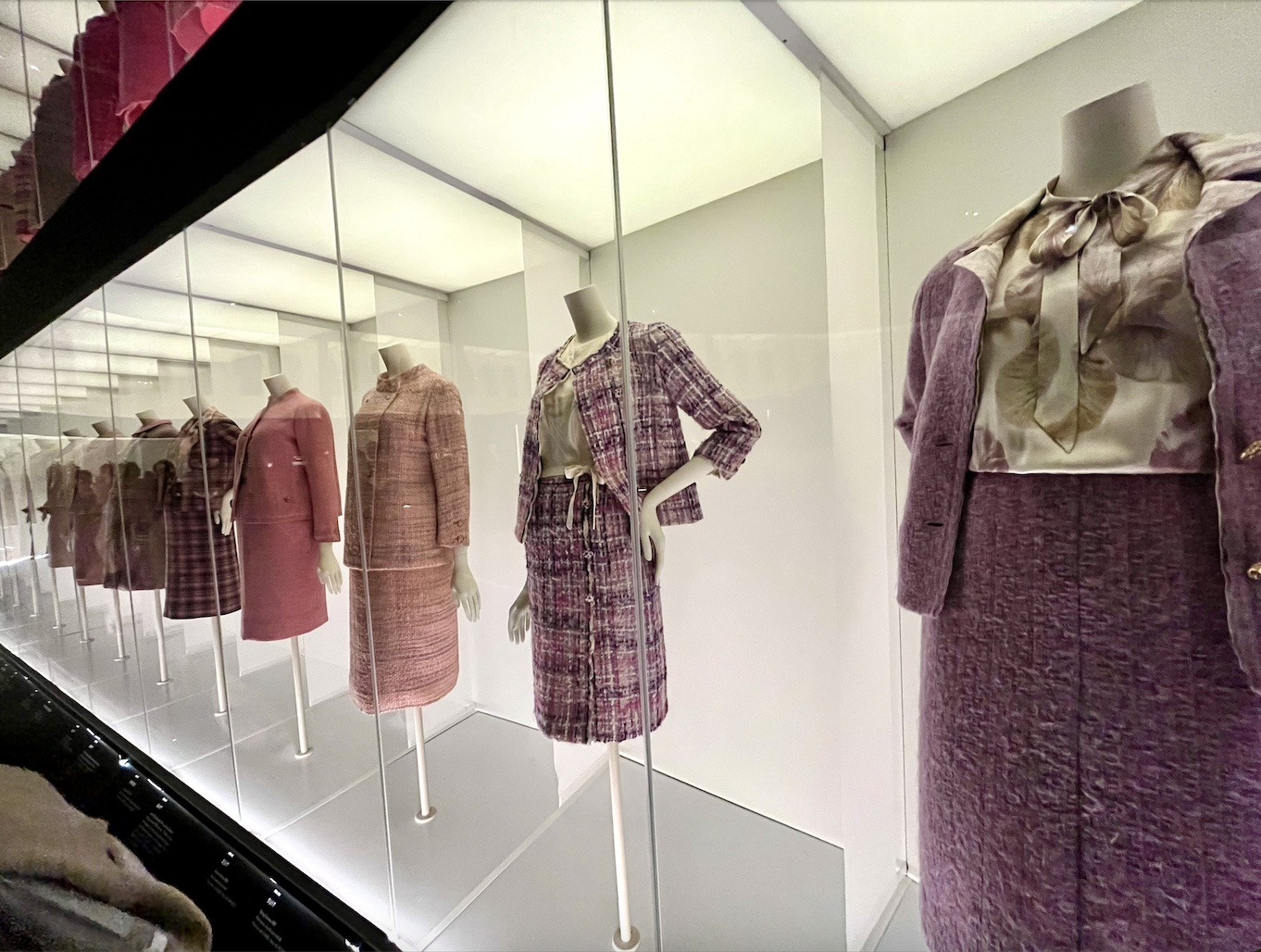 displays to see them in their entirety due to the overwhelming amount of people. As one worked through the galleries, the spaces opened up, but that sense at the start made it difficult to enjoy fully. It should be noted the exhibition has been sold out for months and extended on more than one occasion to meet demand.
displays to see them in their entirety due to the overwhelming amount of people. As one worked through the galleries, the spaces opened up, but that sense at the start made it difficult to enjoy fully. It should be noted the exhibition has been sold out for months and extended on more than one occasion to meet demand.
As one nears the end of the exhibition, two galleries truly stand out ‘The Suit’ is dedicated solely to the Chanel jacket-skirt suit. If the designer were to be summed up solely by these pieces, it would be a just tribute to her talent. Each piece has a beautiful, classic design and cut that remains as elegant and striking decades after its creation. Worn today by anyone of any age, they will still be the most elegant person in the room. As I overheard two women beside me, several decades of age separating them, these outfits also evoked strong memories for the older woman, of her mother in the 1950’s and for the younger of her grandmother in the 1970’s. Beautifully presented in a two-level display that presents the scope of the designs, entering this gallery is a wow moment that I won’t soon forget. As the exhibition draws to a close, we get to see many garments presented without glass partitions in the section titled ‘A Timeless Allure,” allowing the pieces to be witnessed by the naked eye. A cadre of evening gowns, presented on a large, descending curved grand staircase as if evoking the world’s most stylish and glamorous gala entrance, makes for a strong closing impression of an expansive and impressive exhibition.
After spending a day at the V&A, taking in this exhibition and getting lost in its unparalleled collection of objects d’art and design, I took in the current production of Cabaret at the Playhouse Theater. A stunning work gloriously produced and staged. Seeing this show, which felt so timely, made me reflect on how V&A’s exhibition deals with Chanel’s own wartime involvements. While it makes no effort to diminish the designers’ cooperation with the Nazis (several Nazi officials named her as a reliable source), it also mentions her being a potential member of the French resistance based on documents from the French government that the curators have seen but which are not displayed. This manages to cast Chanel as a complex figure who perhaps played both sides when the overwhelming evidence seems to suggest Chanel very much cooperated with the Nazi’s even denouncing her Jewish business partners to the government officials in charge of seizing assets owned by Jews. That the exhibition deals with this all in such a minor way, three placards dedicated to her wartime activity, attempting to cast her as complicated rather than complicit, is truly regrettable.
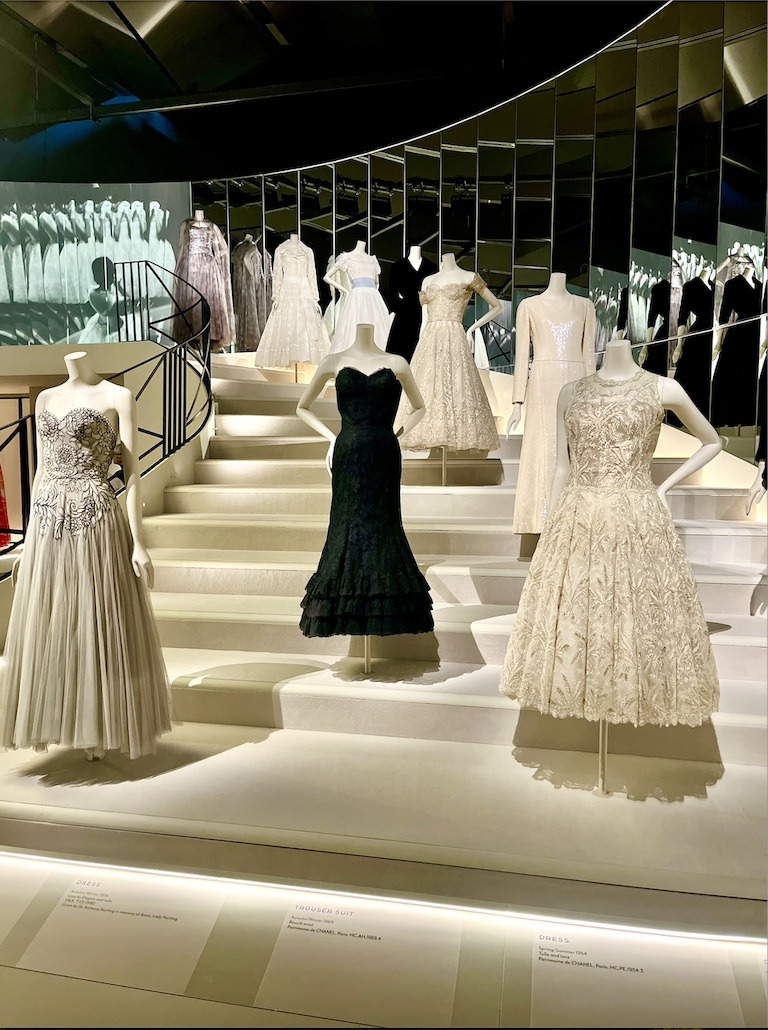 |
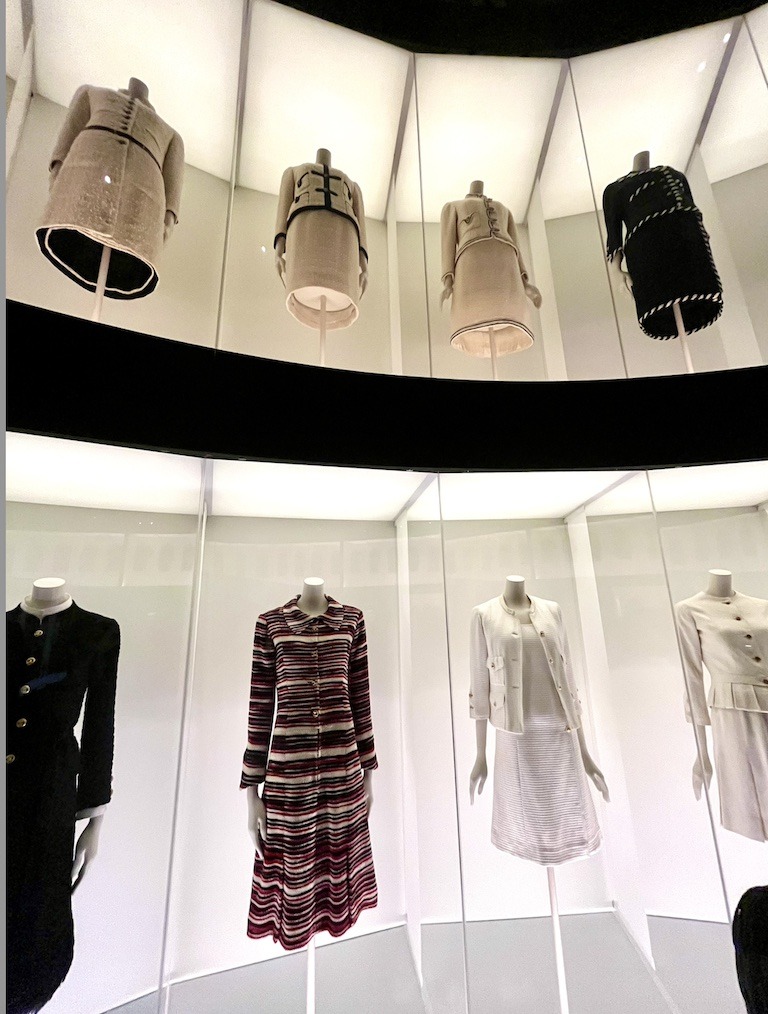 |
The exhibition, originally curated by Miren Arzalluz and Véronique Belloir for Palais Galliera, Fashion Museum of the City of Paris, was adapted by the V&A staff, who reimagined it, including adding over 100 Chanel items from the V&A’s collection. The exhibition is presented with ‘the support’ of Chanel, so I’d imagine they had a hand in shaping the narrative about her wartime activities.
Though Chanel’s haute couture house closed in 1939 (during WW2) and she seemingly retired from fashion, by 1954, at age 71, she returned to present a new collection, which she told Life magazine at the time that she was inspired to do so because Christian Dior had remarked that “a woman could never be a great couturier.” Interestingly, upon her return to fashion, the British press proclaimed that ‘Mademoiselle Chanel might just be one step ahead of Dior”.
While her wartime activities will forever blemish Coco Chanel’s legacy as a person, the brilliance of her artistry and creativity as a designer are unquestionable. If one can separate the person from the work, then there is no doubt that the garments and the eponymous fashion house that Gabrielle ‘Coco’ Chanel created are, as proven by this vast exhibition, nothing short of a stunning collection of work that will stand the test of time.

Coco Chanel Fashion Manifesto Exhibit at London’s V & A Museum is NOW CLOSED . However, The New Look an American biographical drama television series that depicts Christian Dior in Paris after World War II when he created his fashion line that unofficially got named the “New Look“. The fascinating edge to the story is his professional and ideological antagonism with Chanel. It is now screening on Apple TV+
Kareem Tabsch : Guest Contributor Miami. Is a devoted Anglophile who was making his virgin visit to London.Tabsch is the co-founder of O Cinema in Wynwood, and is an independent film director whose latest movie NAKED AMBITION is about to Premiere at Miami Film Festival

